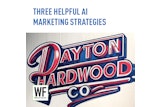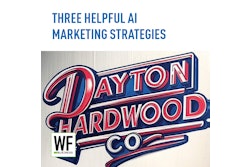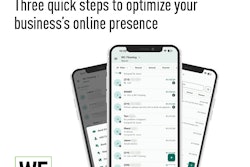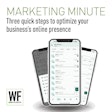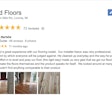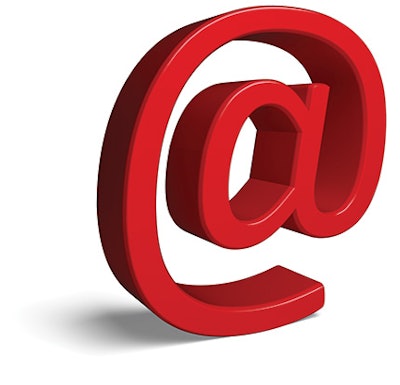
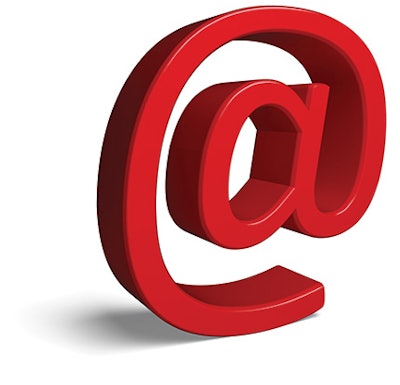 Shutterstock.com | BillionPhotos.com
Shutterstock.com | BillionPhotos.com
With all the ballyhoo about the power of social media, it might be tempting to view email marketing as an old technology that should be put on the back burner and forgotten. But that would be a mistake. Designed correctly, an email campaign is a terrific company brand amplifier that can magnify the effects of social media.
"Email can drive perceptions about your brand that translate into social sharing," says John Arnold, VP marketing at Denver-based FullContact Inc. "It can also drive customer loyalty, repeat purchases and referrals."
Successful email marketing, though, means more than just sending a few messages and hoping customers respond. Doing it right means planning how you want the your clients to view your company—as the most reliable source for high-end flooring? As the price leader? Or as some variation of the above, along with a reputation for expertise in a certain niche? Firm up that strategy, and then drive it home with emails that stand head-and-shoulders above the crowd.
Here are four tips for doing just that.
Tip #1: Design for Mobile
To impress your recipients, your emails should acknowledge the rapid shift toward smartphones. "Most email is now read or at least viewed on mobile devices," Arnold says. "So your email strategy needs to provide information that people on mobile devices want to read."
That means writing copy that gets to the point quickly. It also means encouraging readers to interact with the email text. Include links that take recipients to informative pages on your website. "Provide lots of content that can be watched, swiped, pressed and tapped," Arnold says.
Bonus tip: Make all content mobile-friendly. Arnold gives this example: "Videos with portrait dimensions that fit on the screen when the phone is upright are more effective than widescreen videos that must be viewed by rotating the phone."
Tip #2: Exploit the 'Preheader'
Next time you open your email, take a close look at your inbox messages. You'll likely see one or two lines of text underneath (or to the side of) the subject line. That text is called the "preheader," and it's an important sales driver for those who know how to use it.
"An amazing number of marketers ignore the power of the preheader," says Jessica Best, digital marketing evangelist at Kansas City, Mo.-based emfluence. "That snippet of text gets the biggest percentage of real estate in the inbox, so you want to make the subject line and the preheader work together to encourage the recipient to open the email."
Here are three examples of such combinations:
Subject: Save money on your next finish purchase.
Preheader: Free shipping for orders placed before 5 p.m.
Subject: Claim your discount coupon for kneepads.
Preheader: Open this email to print your coupon.
Subject: Maintenance tips for your wood floor.
Preheader: Find out how to get a free maintenance kit.
Bonus tip: Always position your preheader text at the top of your emails, above the graphic. That will keep the ugly computer code of the graphic from being pulled into recipients' inboxes.
Tip #3: Ask 'em to Share
Emails often include social media buttons, usually positioned below the message. But when recipients click on those icons, are they transported to your social media feeds? You can do better, says Steve Dodd, a Toronto-based business consultant. Include buttons that share your content on your visitors' social media feeds.
"Very often when I read an email the first thing I want to do is share it," Dodd says. He could do that by forwarding the email to his list of key people, but "it would be much better if I were able to easily post the information on my own Twitter feed, where I have many more followers," he says. "That would also let me add a comment to the text."
In essence, Dodd says, you want people to promote you, and helping them share your copy on their social media feeds does just that. To do this, you will need the text of the email to be posted on your website. When people click to share your email, they will, in effect, share your website page.
Bonus tip: Responding to shared posts with your own comments promotes good feelings and expands the reach of your brand.
Tip #4: Send a Video, Not a Sales Pitch
You send an email partly to inform and partly to stimulate a desirable action on the part of recipients. But what should that action be? It's tempting to just ask the customer to place an order by including an advertisement at the bottom of the email. Resist the urge, Dodd counsels. "People in general are getting sick and tired of advertisements," he says.
Instead of a sales pitch, offer helpful information. One excellent technique is to offer complementary videos. While the videos provide helpful information, they also operate as soft sellers. They do this by providing in-depth information about how viewers can benefit from your merchandise or services.
Your goal, Dodd says, is to draw people to your core website so they engage profitably with you. While videos do just that, so do links to pages of helpful information that also have merchandise offers. Dodd puts it this way: "Instead of saying, in effect, 'If you like this email, buy this item,' say this: 'If you think these ideas are worthwhile, go here for more information.'"
Bonus tip: Encourage dialog by including a line that says, "If you have any thoughts on this email, let me know. Click here," then link to a form for feedback.
All of these ideas share a common denominator: customer engagement. By promoting two-way communication, you encourage recipients to enter into a long-term relationship with you.
As they deepen their relationship with your company, customers will come to appreciate your brand—the strategic marketing position your marketing promotes. "Decide what you are trying to accomplish in your overall business strategy," Dodd concludes. "Then power that strategy with an effective email marketing campaign."










